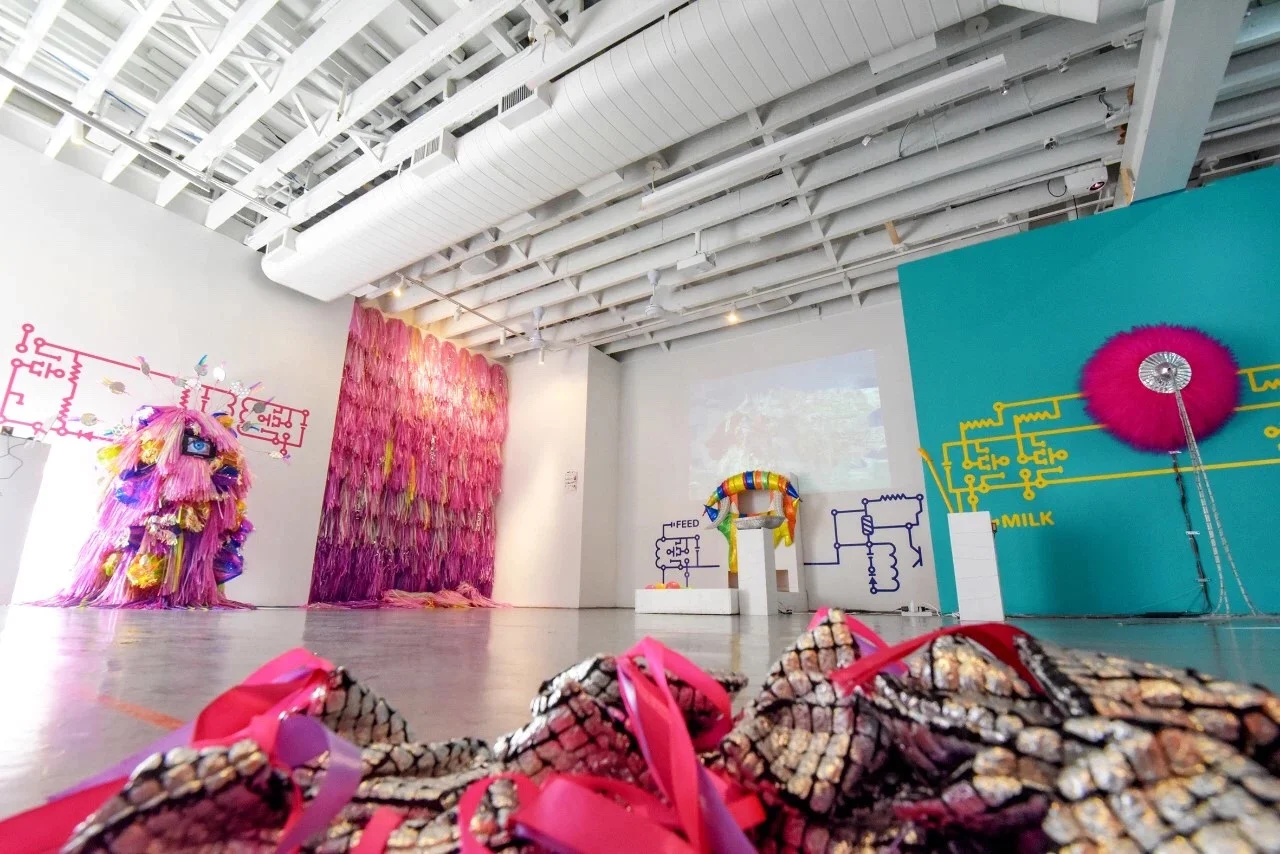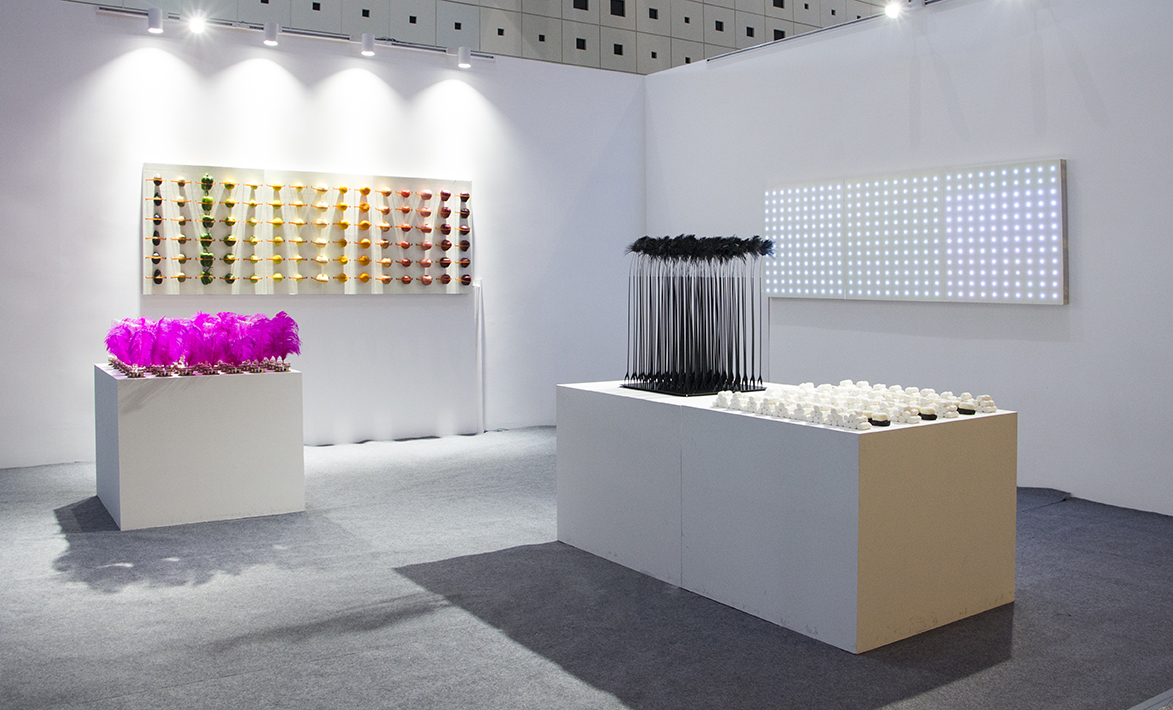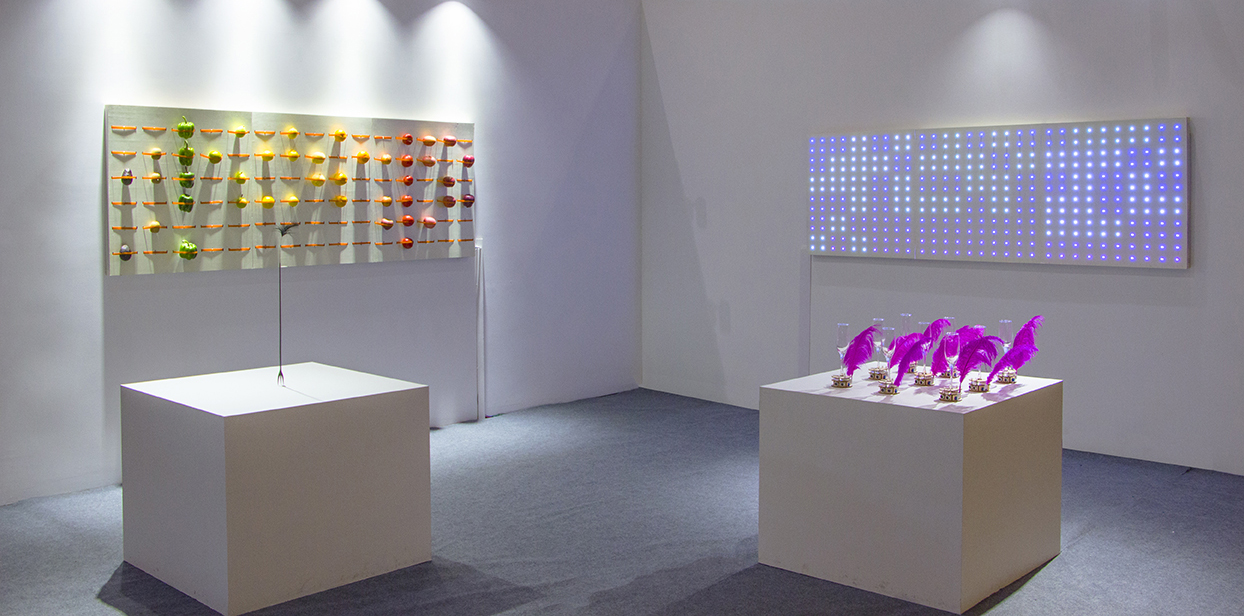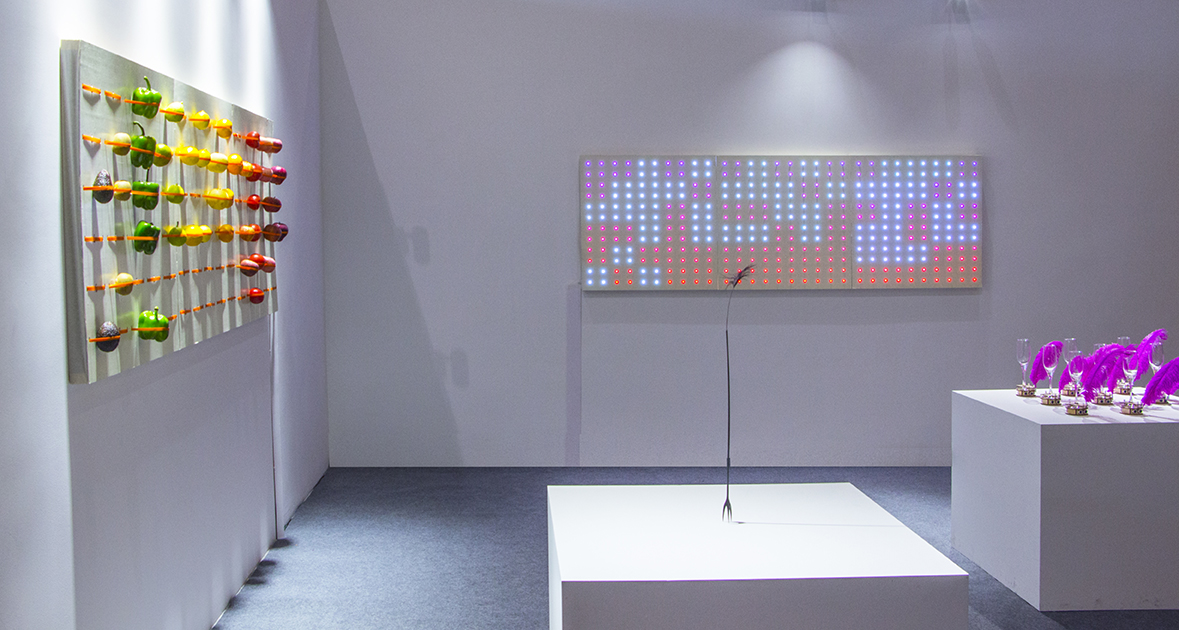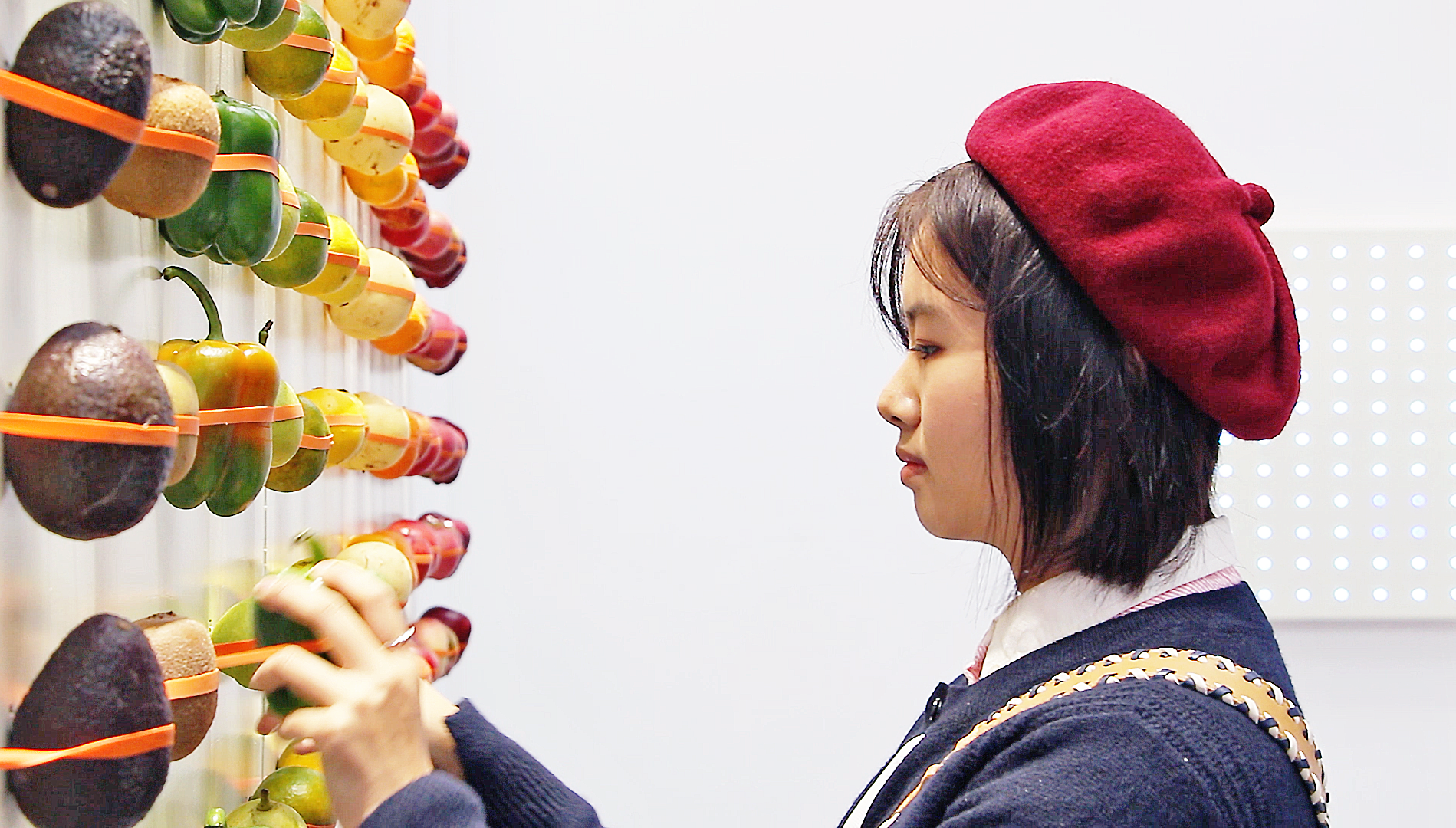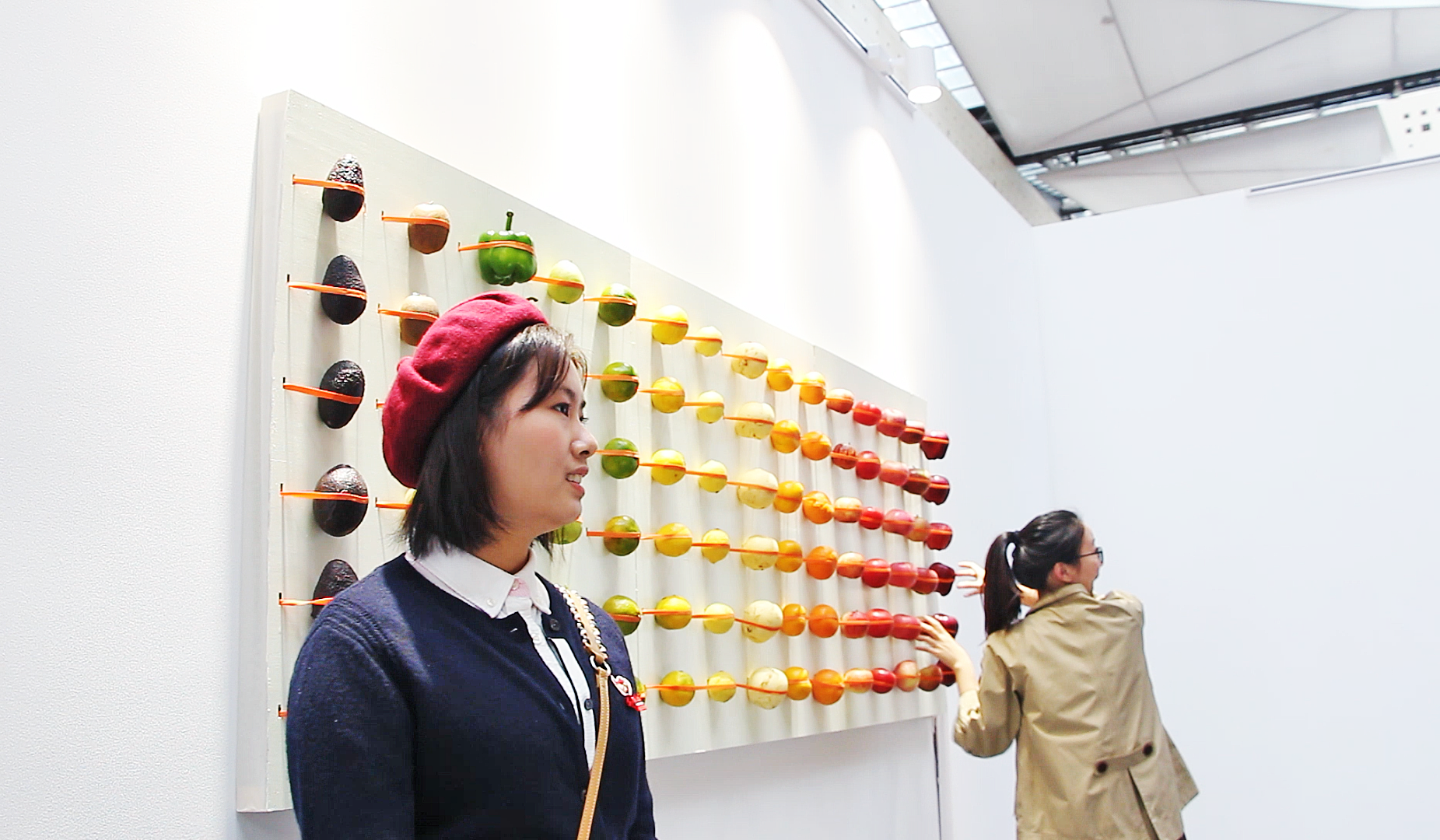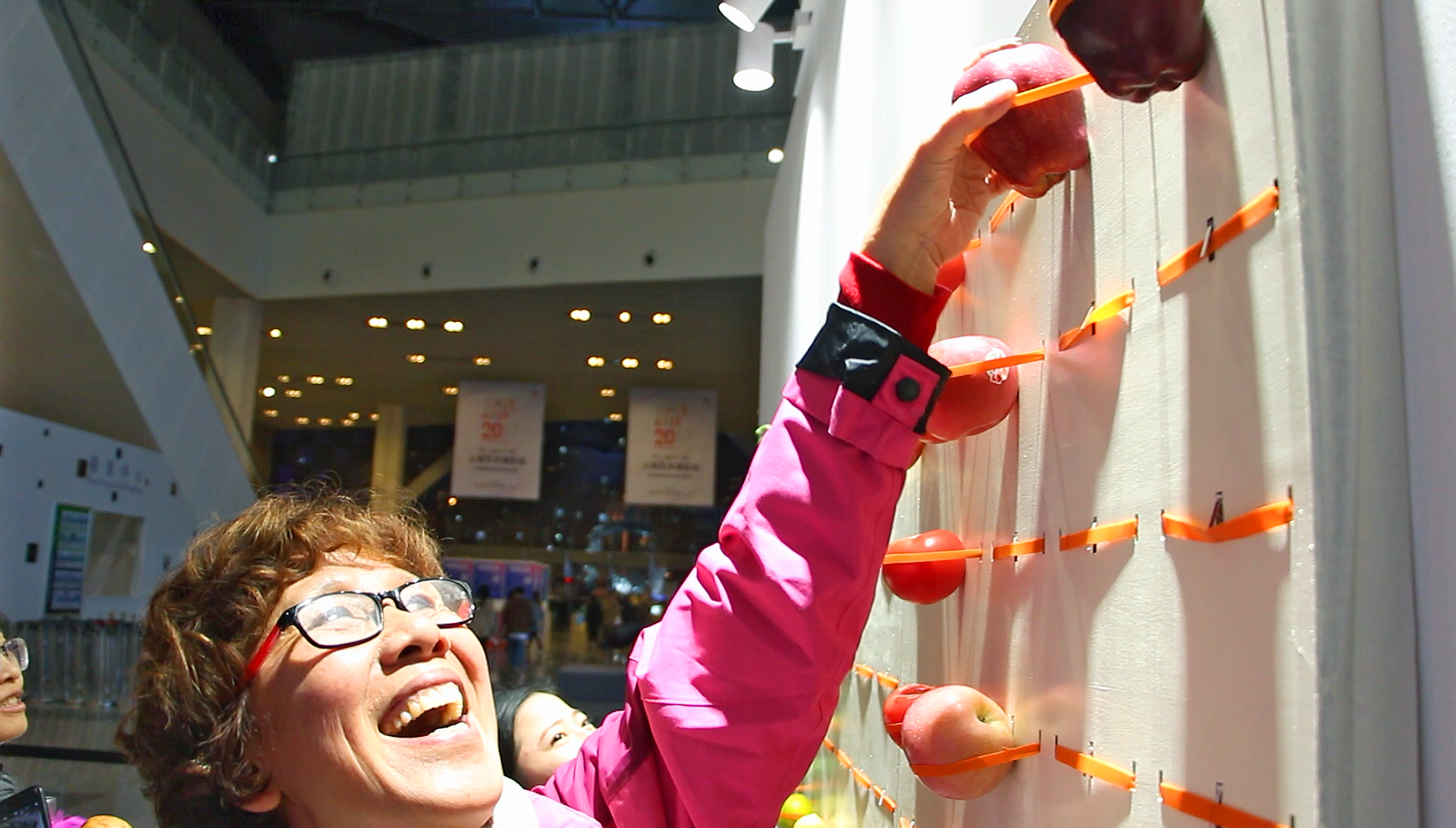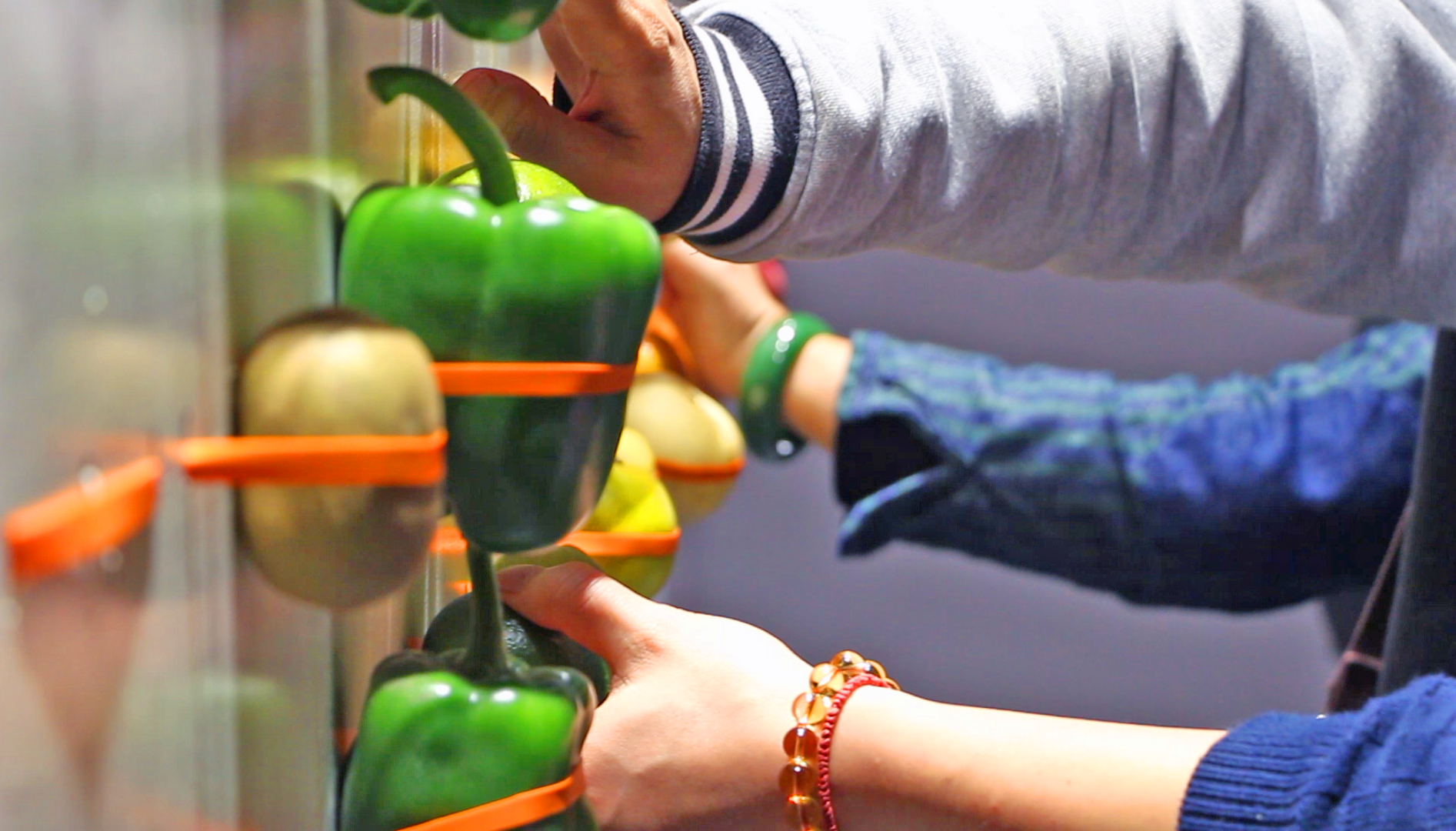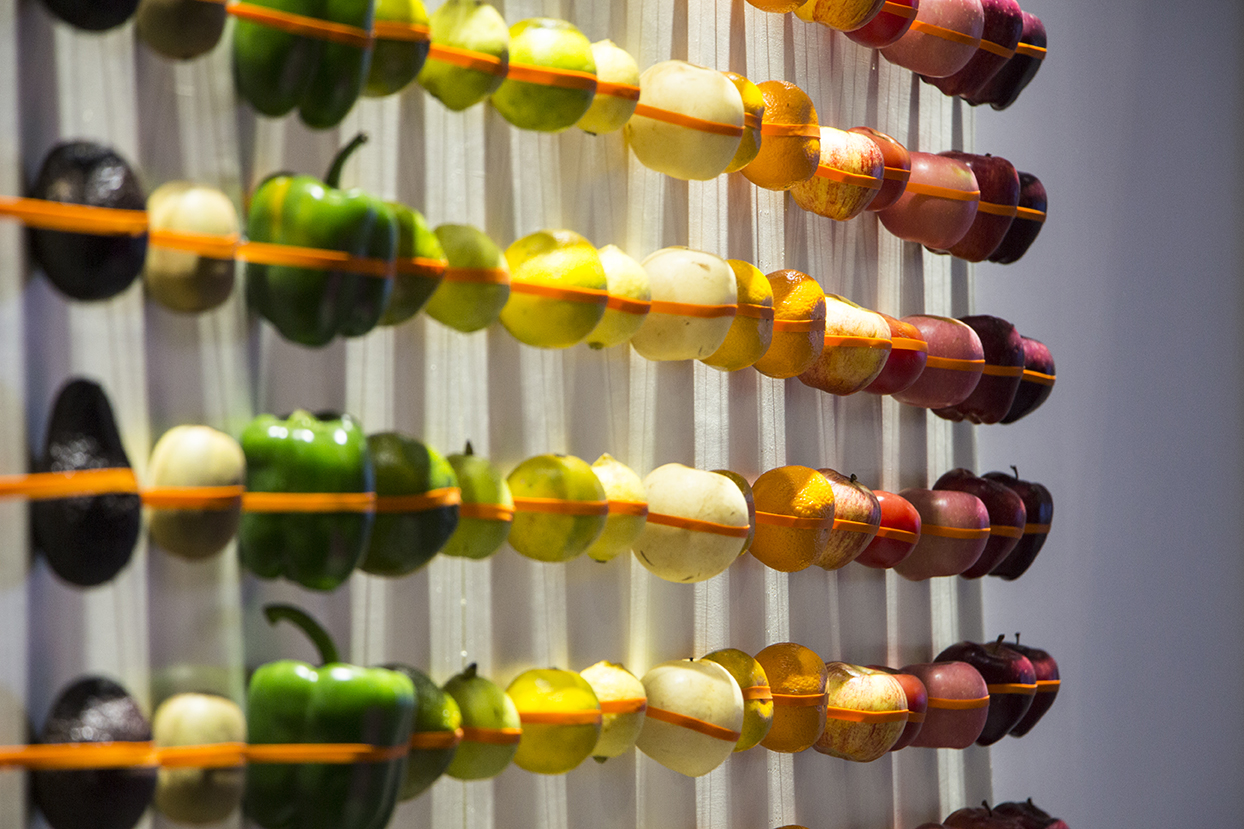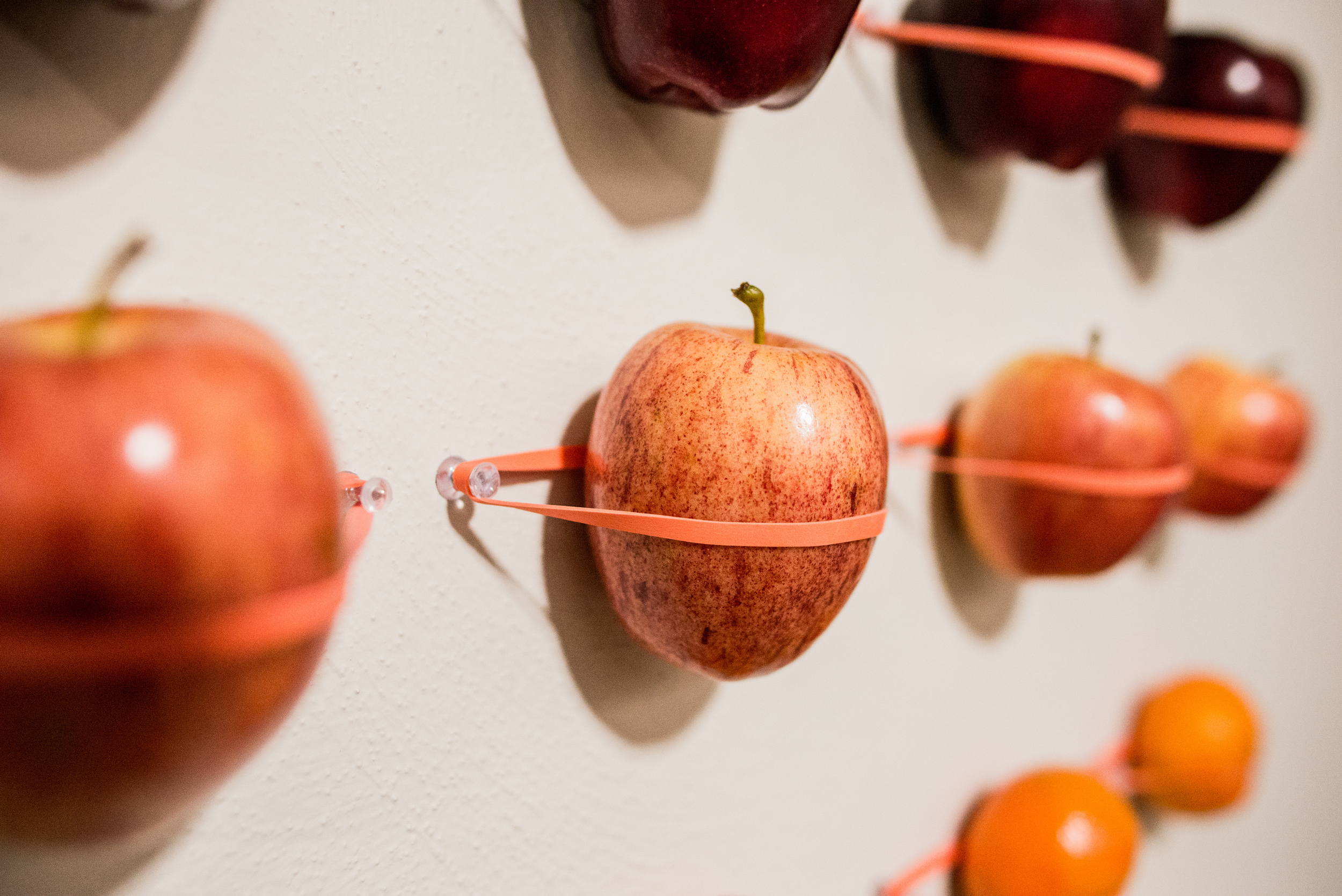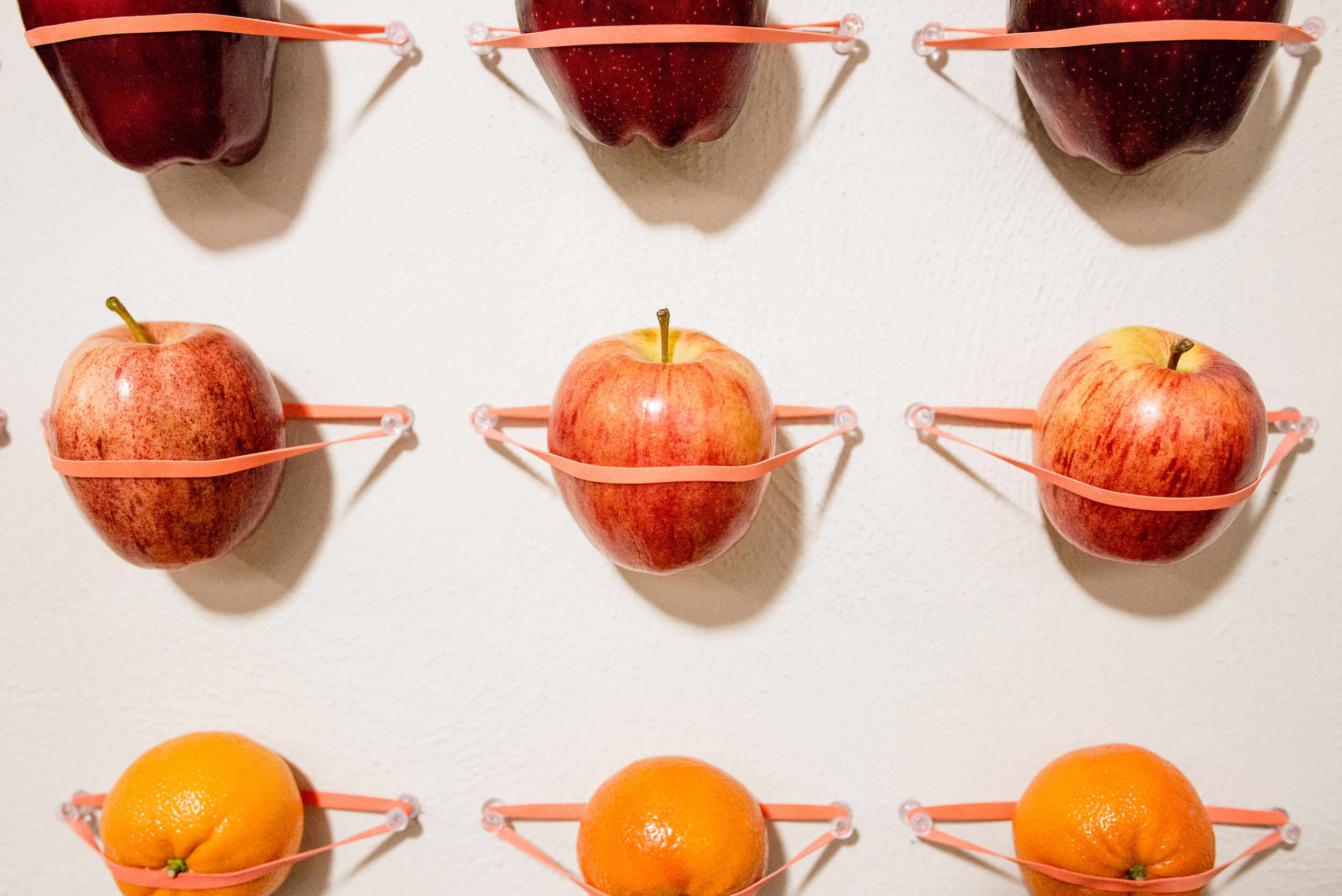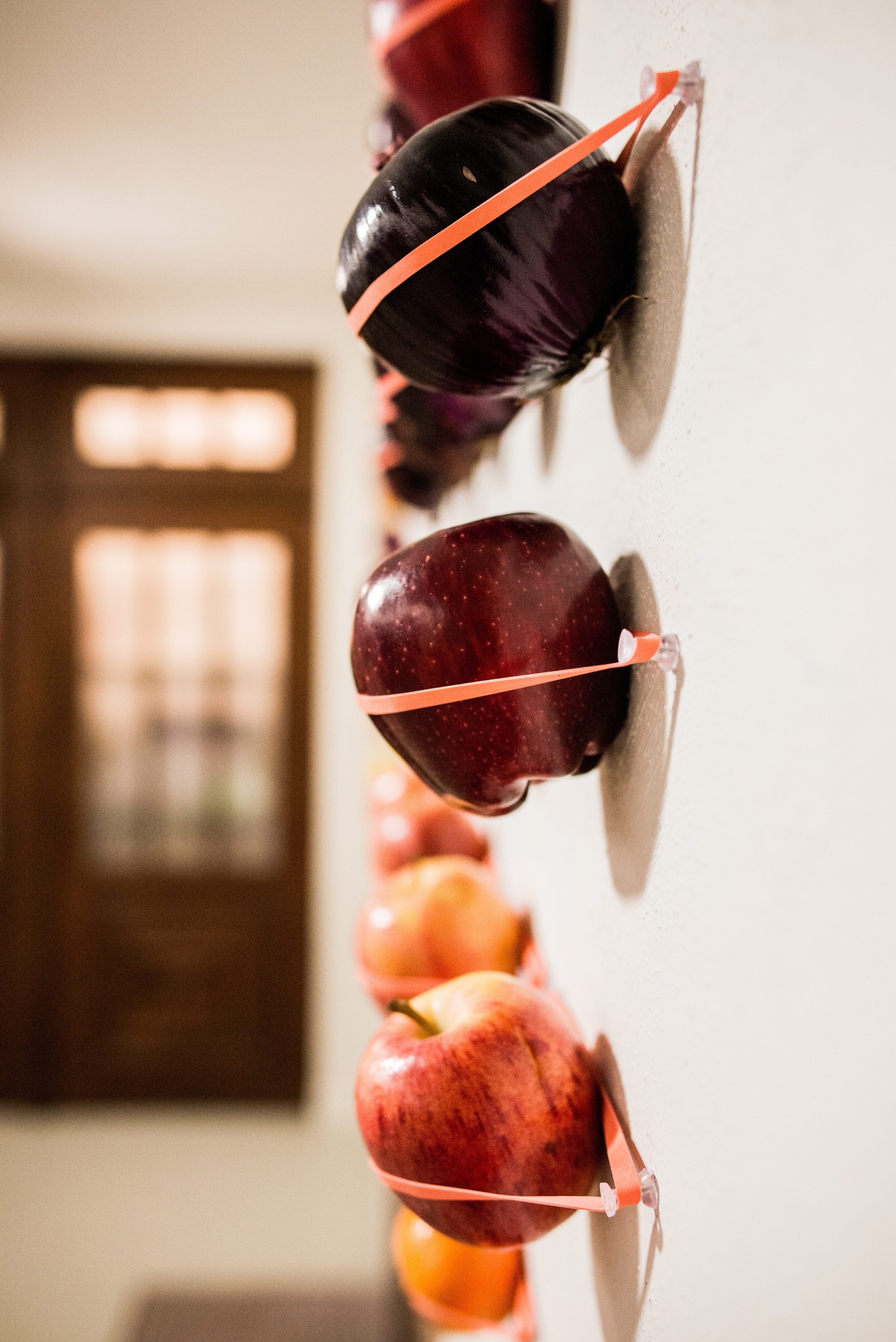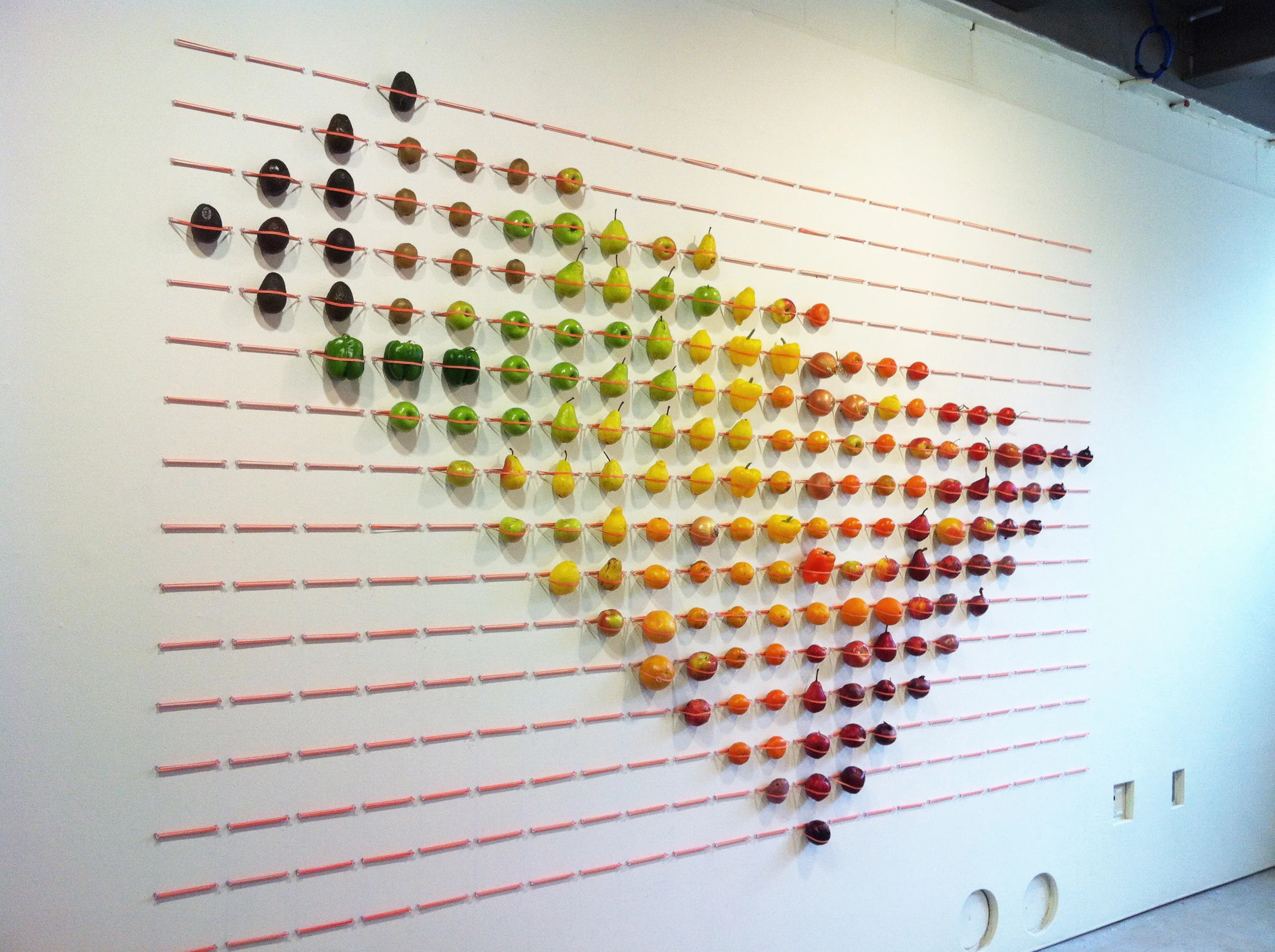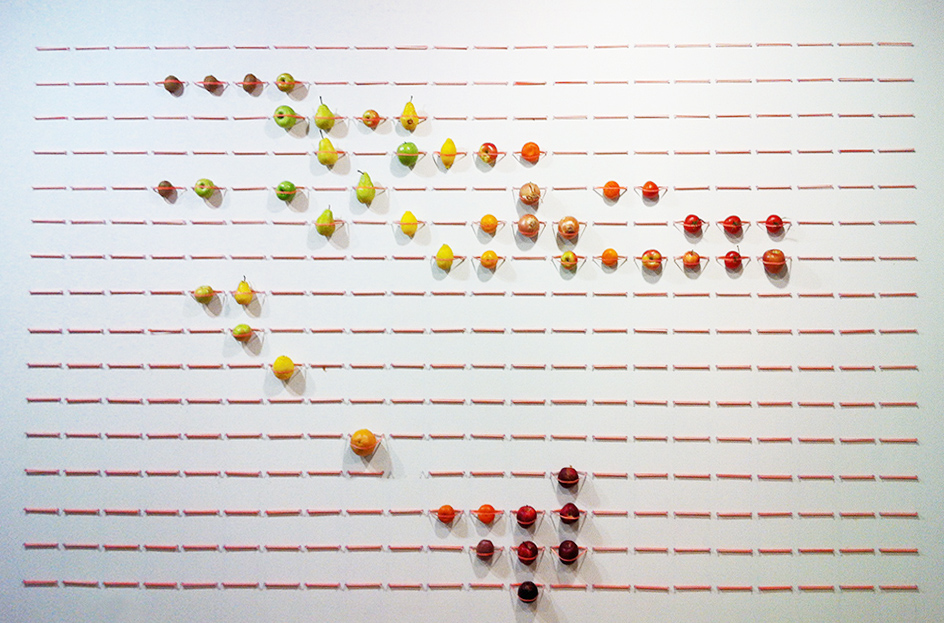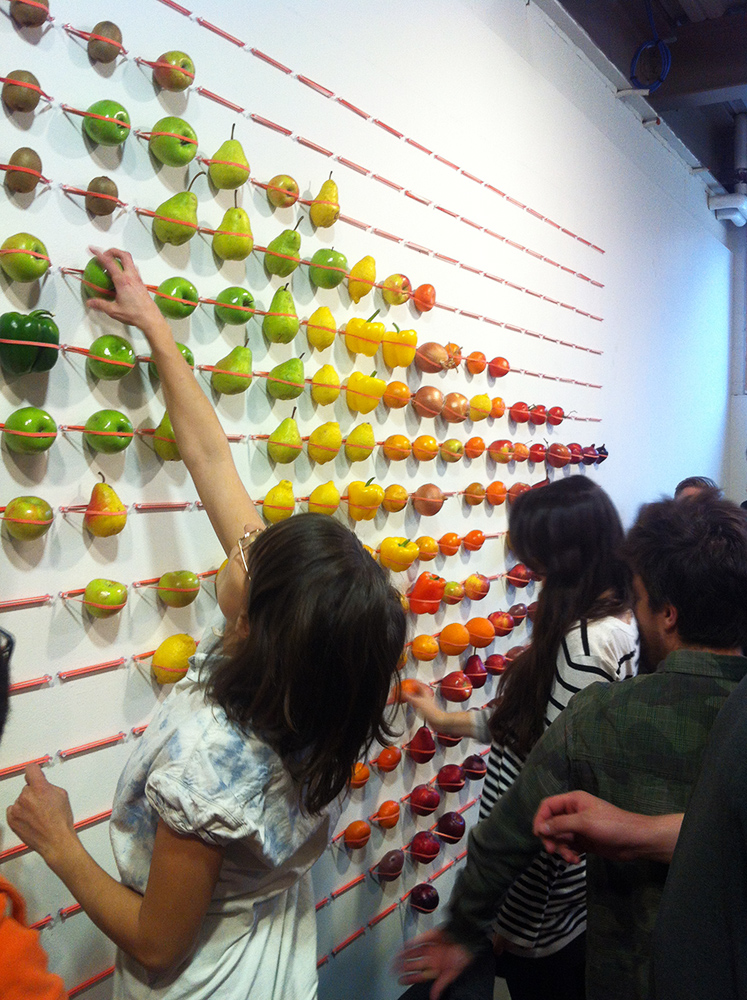

CHEWING MONSTER
CHEWING MONSTER
Chewing Monster
CHEWING MONSTER’s E-ORGANIC FARM
Chewing Monster is an immersive and participatory pop-up game arcade created by Chewing Theory, collaborating with Cloud Gallery. As the brand’s initial project, Chewing Monster explores intercultural, intergroup, intermedia, and “interspecies” communication in the post-human era from within the imagined context of an “organic monster farm,” where a mother monster called “Chewy” with self-regenerative ability indwells and produces cognition-enhancing edibles from the visitor’s input of digitalized human behavioral and emotional data. The exhibition brings together innovative ideas from the worlds of art, design, digital programming, gaming, and dining, showcasing to visitors an alluring world of intense visual, cerebral, and sensory pleasures.
Chewing is the first step in digestion, an intimate act in which what is alien to our physical bodies is internalized and incorporated. This act could also metaphorically apply to the process of conceiving and pondering intellectual concepts. “Monster,” derived from the Latin monstrum, meaning “portent and the unnatural,” usually emerges from the ether of fantasy, fear, and, many times, the unknown. Therefore, the expression “chewing monster” bestows a concrete form upon the embracement of the unknown, which has been an overarching topic of the previous practices of HE Wei, the Art Director of the exhibition and co-founder of HE+HU Creative Collective, the predecessor of Chewing Theory.
The narrative of the exhibition resembles “a sustainable agricultural system” that combines farming with ecological tourism. The entire space is divided into three sections: shelter, dining hall, and store.
The Scene of the Exhibiton
“The shelter” is a place where visitors can gain “an immersive farming experience” by “petting” the mother monster and “interacting” with the facilities in three respective “bio-labs,” where the activities of feeding, milking, and grooming take place. As visitors enter the gallery space, they will be asked to pluck a card off from a large cylindrical sculpture that resembles the body of Chewy, the farm’s first monster inhabitant. This card functions as the key to the facilities in each bio-lab and registers the times of the visitor’s interaction, which will constitute the unique formula of a monster baby “born” by the end of each visit. The video parts at the bio-labs come from the works of three respective artists. Cao Yuxi (JAMES)’s RedTide reveals the magic reaction inside the monster’s milk. In a hologram display powered by the monster’s “excreta” float the 3D images by Andrea K. Macias-Yanez of webpage-mapped herbariums. Aya Kawabata presents a whimsical world in which monster babies are conceived and hatched after their mother is fed.
“The dining hall” provides an authentic and entertaining “farm-to-table experience” open to audience participation. Tyler Henry, Miri Park, and Nitcha Fame Tothong have created an experimental arcade game, Lick It, in which the visitor controls a tongue-shaped joystick and steers it to “lick” the ice cream on the screen before it melts. Salad Simulator by Sierra Ortega is a virtual-to-physical experience where visitors are invited to fill a questionnaire listed with monstrous ingredients and a cook standing aside simultaneously makes customized salad dishes based on the indicated choices.
“The store” is where visitors can discover and shop a quirky and unique range of monster-related products and supplies. All who “labor” at the three bio-labs of “the shelter” will be granted a certificate of live birth of a monster baby in acknowledgment of their contribution. However, only a small proportion of visitors who stand out in their performance, evaluated by their times of interaction that are recorded in the card they carry around, will be rewarded with special gifts.
The visitors pick-off the antennas of the monster (the check-in card the exhibition)
Chewing Monster, through the intimate act of chewing, attempts to bring forward an unconventional tale of “interspecies romance,” a theme that has been integral to many cultures for centuries but purposefully suppressed or altered in recent decades to make less “creepy.” In both Western and Eastern mythologies and folklores, humankind’s commingling with monsters, beasts, and shape-shifting gods is part of human heritage. The recent revival of monstrous aesthetics, that is, the latest Oscar winner, The Shape of Water, and Gucci’s recent “cross-species” collection, had transcended those ancient stories and proposed a way humans situate themselves in a post-human stage where what is non-human and beyond human acquires increasing legitimacy. Chewing Monster, following the same strain, addresses this question by inviting visitors to take on a “visceral encounter” with what can seem atypical, anomalous, or flawed to a normalizing eye. Additionally, the exhibition discusses another layer aligned with the post-human era: the digital domains of contemporary life where our input of information is constantly consumed and absorbed by an invisible “monster,” usually referred as a hidden virtual host or a main engine in real life, while we, in turn, count on the feedback it produces to construct our self-image, social status, and networks in both virtual and physical worlds. Of course, it sounds terrifying to be dissolved into the vast outside world of data and code. However, the symbiosis between humankind and the cybernetic, also a relationship this pop-up mainly portrays, gradually seems to be becoming an inevitable trend. There might always be more curiosity and excitement than fears as we face the alluring world of the unexplored.
The electronic milking installation of the monster
Art Director: HE Wei
Participating Artists: Andrea K. Macias-Yañez | Aya Kawabata | Cao Yuxi (JAMES) | HE Wei | Sierra Ortega | Tyler Henry, Miri Park, and Nitcha Fame Tothong
Fiber Designer Duo: Zhu Dili and Li Lei
Space Designer: Afoam
Illustrator and Poster Designer: Annnj
Time: June 14 –June 24, 2018
Opening: June 14, 2018, 6pm -9pm
Press and VIP: June 14, 2018, 3pm-6pm
Venue: Red Brick Space, Lower East Side, 198 allen street, NY, NY, 10002
TEAM
Art Director: HE Wei
Executive Director: Tommy Chen
Technical Director: Debbie Zeng
Project Manager: Wang Yangxingyue
Senior Engineer: Rishi Zhao
Technical Team: Chris Hu | Wang Chun | Zeng Lingping
Fiber Designer Duo: Zhu Dili | Li Lei
Space Design: Afoam
Graphic Designer: Annnj
Media Strategist (U.S.): Judy Cai
Media Strategist (China): Zhang Yiwei
Advisor: Sherry Tao | Fan Wenrui | Zhang Peng
Photography: RV Studio
Video: EI Studio
Project Assistant: Guo Meihan | Wang Chuqi

DESCENDANT
DESCENDANT
[descendant|祠堂香火]
The work “Descendant” is an immersive VR art experience expressing the observation and reflection on the cultural memories behind cultural heritage Cantonese embroidery. The work presents a whimsical and surreal imagination of the future potential of Cantonese embroidery that influencing Southeast Asia, as well as its breakthrough of the technical shackles in the digital age.
The work interprets the concept of “cultural memory” behind Cantonese intangible cultural heritage from the two dimensions: ritual and space.
The Screenshot of artwork: Descendant
“Ritual” is the starting point of the work’s narrative. We carefully selected the carp dance, dragon dance, lion dance, and other types of folk performance in “Lao Re”, a celebrating ceremony in the Southern areas of China, and endowed them with dynamic life through digital animated transformation. From the perspective of Cantonese embroidery, it presents the original cultural context its functionality as a widely used tool for rituals in traditional ceremonies and behaviors.
The Screenshot of artwork: Descendant
The second half of the work unfolds around the concept of “space”. Inspired by the ancestral temple buildings in the China’s Southern area, a bright and gorgeously mirrored virtual space is constructed. The ancestral hall is the destination of the folk rituals, and it is also one of the material embodiments of the concept of “family” in the East traditional culture. The work extracts the core structure from the complex architectural appearance of the ancestral hall, and gives it a crystal-clear mirrored texture, making it an epitome and common memory of the thousands of families in the Southern areas of China, and outlines a pursuit to everlasting existence of “inheritance”.
HE Wei is experiencing the VR artwork: Descendant @China Traditional Culture Museum
Descendant at the exhibition: Embroidery of Splendor
In this mirrored space, we transform the embroidery into a colorful and mysterious living creature generated with digital codes, implying the awakening of traditional crafts in the digital age, its breakthrough of the old restrictions, as well as the new vitality and infinite possibilities bred in the technological progress.
Special thanks to Tsinghua University Education Foundation

ELECTRONIC+FRUIT WALL
ELECTRONIC+FRUIT WALL
[eLECTRONIC+FRUIT WALL|电子水果墙]
Electronic+Fruit Wall is a participatory installation that transforms the natural into the artificial, the physical into the digital. The installation is comprised of two parts: a fruit wall and an LED pixel wall.
The former constitutes a color gradient made of fruits of different colors and textures, highlighting the order underlying the seemingly unorganized natural world and recontextualizing the behavior in nature-picking fruits-in an artificial setting. The latter, the LED pixel wall, resonates with the former. When a fruit on the former is picked, four LED pixels of the corresponding spot on the latter will change and then gradually shift their colors.
This juxtaposition between the tangible and the intangible alludes to the ways the virtual and digital has permeated and represent our daily life under big data era nowadays.
The following images are Electronic+Fruit Wall, Flirting Goblets, and The Aerial at Shanghai Art Fair 2017
[FRUIT WALL|水果墙]
in Fruit Wall, HE+HU relocates traditional fruit picking in an interior environment where the colors, scents and textures of fruits are emphasized through a graphic inspired display and joyful interactive process. The color gradient suggests a musical movement, which tends to change when people start "picking" the fruits. The project is also an attempt to bring a new perspective to the everyday food consumption and isolate it into an abstract visual experience.
@Cranbrook, Bloomfield Hills, MI, US
FLIRTING GOBLET DEVICE
FLIRTING GOBLET DEVICE
[FLIRTING GOBLET DEVICE|调情酒杯]
3"x3"x12" Wood, Electronic devices, Feather, Glass
This is a series of kinetic products designed to facilitate social interaction. A feathered device is connected to each goblet, serving as an avatar for a person to gently touch the world. When users are holding the goblets and cheering during dinners or parties, the feathers, controlled by the sensors, will start to “flirt” by waving to one another in a humanized manner. Therefore, the goblets become the props that visualize intimacy and help people break the ice in an implicit but playful way. The design was selected by many venues including New Museum, the Knockdown Center, the Center for Contemporary Art and the Hollows Artspace, etc.
click above to see the video



